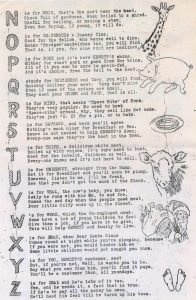
Nursery rhymes help grow and develop children properly. Certain activities require a variety of skills. By doing having your child actively practicing these skills you will be encouraging them to develop these skills and it is beneficial for children of all ages.
Nursery rhymes are usually poems or songs. This was started in the late 18th and early 19th century, in Britain and surrounding countries. There are many nursery rhymes songs, for example Lullabyes. Described to be the very first poem that reaches the human ears. They are soft, calming, soothing and repetitive. A classic Lullabye is “Rock-a-bye-Baby” and “Hush, Little Baby” which in fact is a American traditional in probably the middle of the 18th century. Another type is clapping songs, by handclapping this points out the rhythm of the poem. For example “Pat-a-cake, Pat-a-cake, Baker’s Man.”
Music is language. Children are born without the ability to speak, nursery rhymes are a valuable tool in building communication and language skills. Rhyme’s repletion can help your child become aware of individual units of sound, like phonemes that make up words. They help your child categories words, and hear similarities between words that rhyme or start with the same sound. Nursery rhymes can also make way for a child to love books. The idea of listening from beginning to end helps develop the narrative. This can come with social benefits also, most of the time reading and singing at this age is done in groups. So, your baby or child feels part of a social circle that loves and enjoys reciting and singing together. By age five or six this will have your child ready to think about the sounds of a whole word and that is a critical skill that helps with learning how to read and spell.
There are so many things a child can learn from nursery rhyme. From different parts of a bus. “The wheels on the bus go round and round, round and round the wheel on the bus go round and round, all through the town.” Learning about what’s sparkling in the night sky. “Twinkle, twinkle little star how I wonder what you are, up above to world so high like a diamond in the sky.” These nurseries can help promote education about specific things.
These are excellent building blocks for speaking and reading. Helps the child figure out the English language. The different types of speech patterns. Necessities that they learn to communicate with others. Teaches your child about poetry by using the basics of poetry and how it flows. Assist in helping learn about letters in their sounds, the alphabet and word sounds.
Today nursery rhymes are even used in adult classes to help them understand the English language.